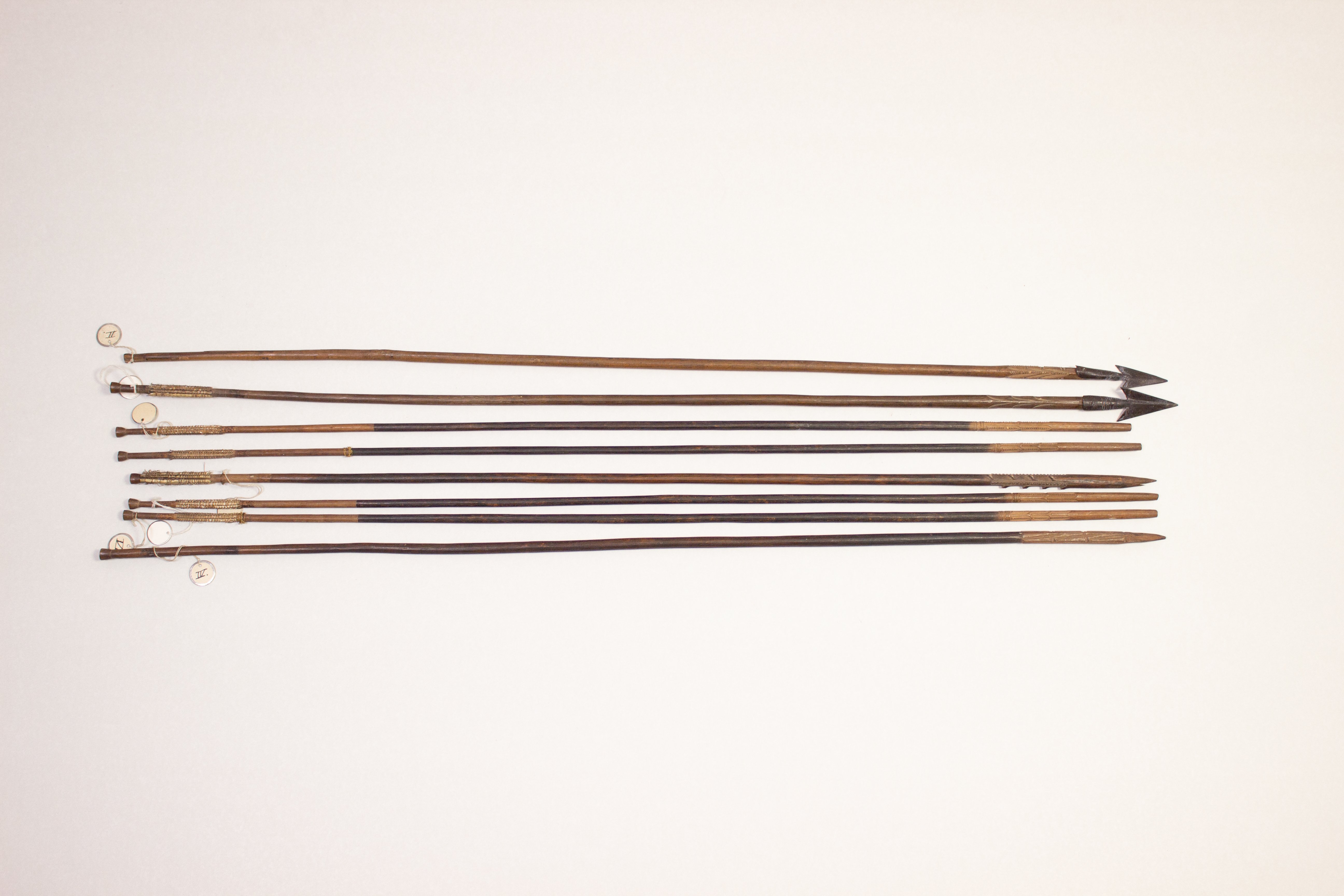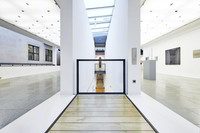A bundle from eight arrows, probably from Africa. The shafts are from wood and with a blunt end, without a notch. Below the tip, there are carved small decorations resp. hooks that probably served as barbs. Two arrows have triangular tips from metal with a socket; the tips of the other arrows are carved from wood resp. not finished yet. On the shafts, there are remains of a bundle or twine fletching.
The time of origin is not known. Likewise, the origin cannot be determined certainly, but probably these are African arrows. Leo Frobenius described these arrows from the Ulm collection in 1930 in his publication "Atlas Africanus" and located them in Central Africa in the regions of the Congo Basin resp. in Angola. At the time of Frobenius, the arrows were ascribed to the cabinet of curiosities of Christoph Weickmann. Thus, they must have been created before 1659. If it actually is a bundle of arrows from the cabinet of curiosities is not finally clarified.
en

